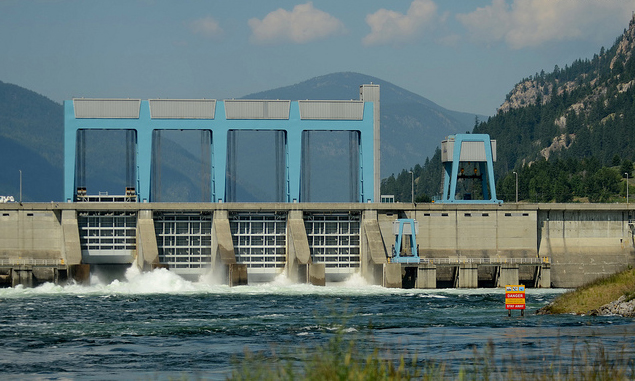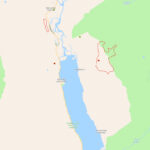Hugh Keenleyside — more than just a storage dam
Since 2005, Eileen Delehanty Pearkes has researched and explored the natural and human history of the rivers of the upper Columbia River Basin.
She speaks frequently at conferences and symposia throughout the Basin on the history of the Columbia River Treaty and its effects on Basin residents. She has recently completed a manuscript titled A River Captured – history and hydro-electricity in the upper Columbia Basin.
An American by birth, Pearkes has been a resident of Canada since 1985 and Nelson since 1994. She has written many articles and several books that explore place and its cultural meaning.
The Geography of Memory, a history of the landscape and indigenous people of the upper Columbia watershed published in 2002, remains a Kootenay classic.
Pearkes has agreed to help The Nelson Daily readers understand the importance of the Columbia River Treaty to the region with another edition of River Talk.
Today the Pearkes continues to write about the topic of one of the most controversial projects at the time of construction of the Columbia River Treaty, the Hugh Keenleyside Dam near Castlegar.
Hugh Keenleyside Dam near Castlegar, B.C. was central to the Columbia River Treaty signed by the U.S. and Canada in 1961. I can remember once being astonished by the fact that this dam had no power generation.
How could a dam have been built and a valley flooded without generating power?
The primary function of this “low head” dam was actually to store water behind it, 7.1 million acre-feet to be exact. (Enough water to cover 7.1 million acres with a foot of water.) The CRT governing how Canada will pass water downstream to U.S. dams, thus giving them the ability to create year-round power.
In the 1990s, three decades after completion of the dam and about the time of the formation of the Columbia Basin Trust, people of the upper Columbia Region began to ask why can’t this dam create power? Within a decade, regional interests had inspired and completed the Arrow Lakes Generating Station. The water that feeds the generators at the station today would otherwise spill over the gates of the dam. For years, this spill caused a decline in fish health due to high concentrations of gas from the crashing water.
The Arrow Lakes generator produces 185 megawatts of power and allows profit from that power’s sale to remain in the region. That seems like a good thing. But just how much is 185 megawatts? I decided to do a relative comparison of other hydro-generating facilities up and downstream of this one.
Hang on for some math.
Brilliant Dam and generating station near the confluence of the Kootenay and the Columbia produce a combined 265 megawatts. Kootenay Canal (upstream of Brilliant on the Kootenay River), 580. Mica Dam (on the Columbia north of Revelstoke), 1800. Revelstoke Dam, 2400. Grand Coulee (downstream in the U.S.), 6800.
WHAT?
Grand Coulee produces almost three times more than the “Canadian” Columbia’s most efficient generators at Revelstoke. It’s more than all of the Canadian generating stations and dams combined, and almost 37 times more than Arrow.
This last, simple equation (36.7 X 185 = 6800) tells the CRT story. Arrow was built for water storage and power regulation, not to generate power itself. The generating station has roughly the capacity of 3 or 4 larger Independent Power Projects (IPPs).
In this era of dam-busting, it would be easy to justify losing that amount of power.
Why, then, should we keep Keenleyside dam in place?
A lot of water has flowed through the dams since the CRT was signed. Water has been regulated for the U.S. for 50 years and the U.S. has paid handsomely for that regulation in the form of downstream benefits. Those benefits mean between $100-300 million annual revenue for the province of B.C.
They would be lost if Arrow came out.
Arrow also provides flood control. The U.S. paid a one-time $CN69 million for 60 years of it. In the winter of 1995-96, when heavy rainfall flooded Oregon’s Willamette River Valley, the U.S. Army Corps of Engineers asked for reduced discharges from Keenleyside to minimize flooding in Portland.
How much will future flood control provided by Canada after 2024 be worth?
Less without Keenleyside Dam?
Also at risk would be fish. Though I would find it hard to argue that dams are actually good for fish, there are certain issues if, in a watershed, one dam is removed, but others around it are not. This may be scientific rationalization, but it’s worth bringing up.
After Grand Coulee Dam’s construction, native fish habitats in the Lake Roosevelt reservoir behind it were nearly destroyed by dam operations and introduction of non-native fish.
One of these, the wall-eye, is a predator of some native fish, among them, the kokanee, a fresh water sockeye. Removal of Arrow could invite Grand Coulee’s fishery challenges to spread upstream into the Arrow Lakes. Wall-eye have been found in the “Canadian” Columbia between the international boundary and Keenleyside dam, having migrated out of Lake Roosevelt. The fish haven’t yet made inroads into the Arrow Lakes system above that dam.
Is it possible that now, nearly 50 years after its completion, the Keenleyside dam is actually protecting fish habitat?
Next column will look whether ocean salmon restoration above Grand Coulee Dam would be helped or hindered by the first Canadian dam on the Columbia system.


























Comments